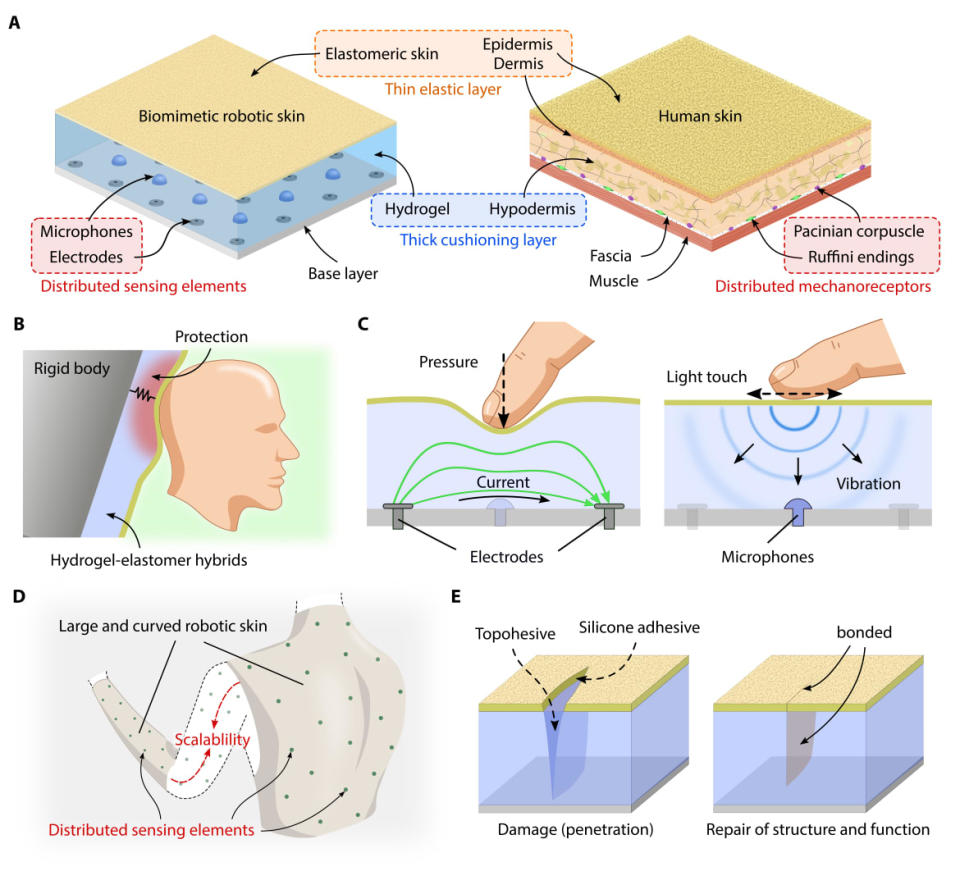Good News, Weirdos: This E-Skin Lets You Tickle Robots

Those “Tickle Me Elmo” dolls might just get a whole lot creepier now that scientists have developed an electronic skin that can feel different sensations like tickling.
An international team of researchers have published a paper in the journal Science Robotics on Wednesday detailing their study into the creation of a bioinspired robotic skin. The material uses different sensors coupled with a machine-learning neural network in order to detect pressure and vibrations. The team believes that it can be utilized on robots to help them get better sensory feedback about their surroundings, as well as on future prosthetic devices for humans.
The skin itself is made of two layers: a top layer made of a rubber-like polymer that imitates the outermost layer of human skin (called the epidermis), and a bottom layer made of a hydrogel that imitates the layer of the human skin below the epidermis (called the dermis). The dermis-imitating layer contains a number of tiny electrodes that can detect pressure on the robo-skin.
It also houses small microphones that “are used to sense vibration due to touch,” Kyungseo Park, a robotics researcher at the Korea Advanced Institute of Science and Technology and the lead author of the paper, told The Daily Beast. “It allows the robotic skin to feel light touches, such as pat, tickle, stroke, and so on.”

Figure of bioinspired electronic skin.
The sensory inputs are then processed through an AI, which tells the bot and/or its operator what the machine is “feeling.” Fascinatingly, the scientists also made the skin “repairable” like normal human skin. In one part of the experiment, they made an incision with a surgical blade before “healing” it with a silicon adhesive. The skin still retained its sensing capabilities once it was repaired.
Park said that this type of e-skin could potentially be used for human prosthesis too “since it provides tactile information.” However, he added that “an appropriate feedback method is required. Sensation feedback can be done by stimulating the nerve or applying vibration on the skin.”
This feels eerily close to the e-skin seen in android and cyborg sci-fi flicks like “Terminator” or “Blade Runner.” No doubt, with a bioinspired robotic skin that can feel and heal, we’re getting one step close to that reality.
Got a tip? Send it to The Daily Beast here
Get the Daily Beast's biggest scoops and scandals delivered right to your inbox. Sign up now.
Stay informed and gain unlimited access to the Daily Beast's unmatched reporting. Subscribe now.

